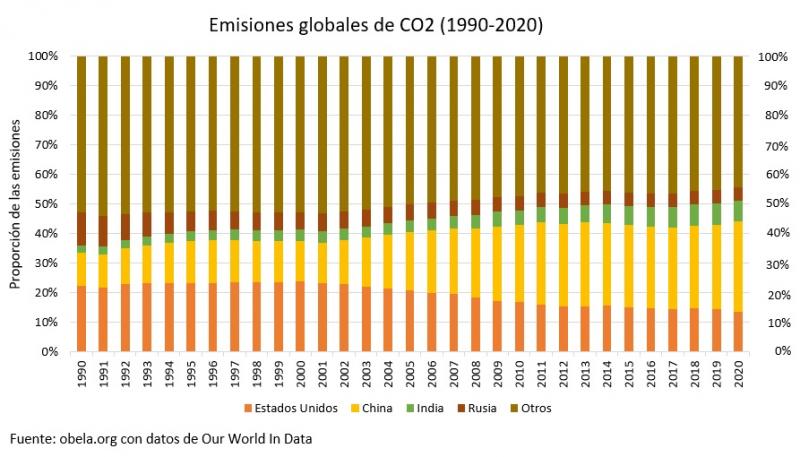What (didn’t) happen at COP26
- blog de anegrete
- 2362 lecturas
The twenty-sixth United Nations Climate Change Conference (COP26) took place from 31 October to 12 November 2021 in Glasgow, Scotland. With representatives from 200 countries, the Conference sought to establish agreements that would define commitments to reduce greenhouse gas emissions and thus tackle climate deterioration. With weak proposals and almost no action plans, COP26 seems to have failed to reach agreements that would reduce global warming.
According to the Climate Change Report, published in August 2021 by the Intergovernmental Panel on Climate Change (IPCC), it is necessary to keep the temperature increase limit to 1.5°C to avoid irreversible loss of biodiversity. For this to be possible, carbon emissions must be halved by 2030 and reach zero by the middle of this century. Otherwise, the global warming threshold would be exceeded in just a decade.
Although fossil fuels are the leading cause of environmental degradation, at COP26, India and Iran expressed their disagreement on the long term phase-out of coal. For this reason, the Climate Pact had to change its language to speak of a "phase-down" of coal and other fossil fuels instead of a phase-out.
These objections are not new. Days before COP26, the BBC leaked documents in which Saudi Arabia, Australia, Brazil and several other countries called on the UN to abandon the idea of abruptly phasing out fossil fuels, arguing that this was not strictly necessary to maintain the 1.5°C ceilings. Given that Saudi Arabia is a significant oil exporter, Australia is a major coal exporter, and India is a considerable coal consumer, it is not surprising.
On the other hand, in 2009, at the Copenhagen Conference, the G7 agreed to transfer 100 million US dollars (for 172 countries means US$55,000 per country on average) per year to developing countries to mitigate the effects of the climate crisis and become low-carbon societies. However, the G7 never delivered the money. Still, developing countries now argue that it is not enough to combat climate change challenges.
Ani Dasgupta, president of the World Resources Institute, commented that it was inexcusable that rich countries could not deliver the agreed finance and that they had poured billions of dollars into fossil fuel subsidies. The Glasgow Climate Pact agreed to double funding for developing countries by 2025, but, given the outcome of the Copenhagen agreement, it is questionable whether these countries will deliver on their funding commitments.
Glasgow also failed to deliver on creating a fund to repair climate change damage to the most vulnerable countries. The United States, Australia and the European Union blocked discussions on this because they are part of the group of countries contributing the most to the climate crisis. The agreement acknowledges the unfavourable position of some countries and provides for technical assistance in case of disasters but does not mention any specific funds, instead only calling for dialogue.
One piece of seemingly good news within this disappointing framework is that, after five years, there is an agreement on the regulation for the carbon allowance market. Known as Article 6 of the Paris Agreement, this instrument aims to help countries account for and compensate for their carbon emissions. So those who pollute more will have to pay countries with forest cover to plant more trees.
The Conference enabled the establishment of a framework for the international sale of these instruments. Countries such as Brazil pushed for creating the regulation as they could take advantage of the rights through the Amazon rainforest and renewable energy projects. However, it could become a mechanism for rich countries to continue with their usual emissions as they can afford to pay for offsets.

COP26 was a waste. As we can see in the graph, only four contries are responsible for almost half of the global CO2 emissions while the rest of the world faces the consequences. The lack of cooperation from the most polluting countries and promises without action keep the global climate issue adrift. Countries that contribute most to the climate crisis through the offshoring of oil production and exports are precisely those that refuse to lower their emissions and pay for damages. It leaves the countries affected by climate change in an even more vulnerable position and without the possibility of mitigating its effects.